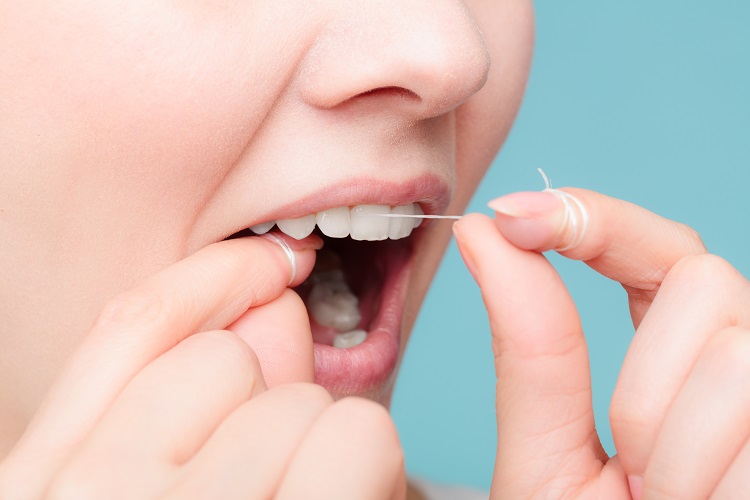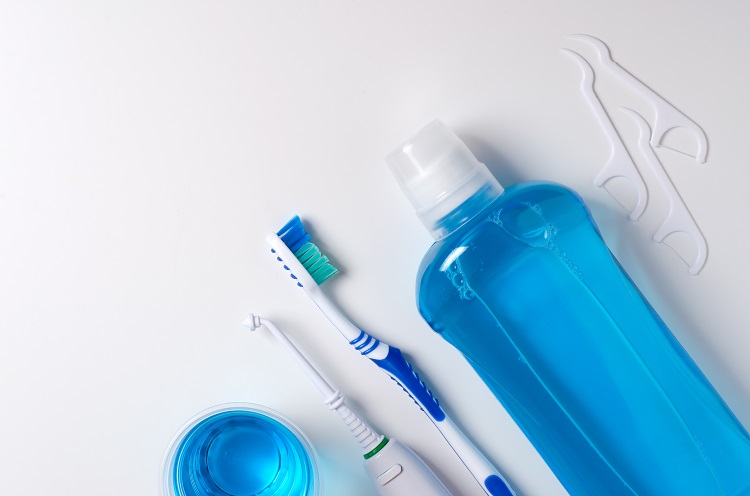Do you know how to use dental floss?
If you have never flossed before, it can be a little confusing at first. As you get on practicing, using floss will become easier. Learn how to floss and maintain this habit to keep your teeth healthy!
When should you floss?

Dentists often recommend brushing your teeth at least twice a day. However, the best time to floss is rarely mentioned. You can floss to remove food debris anytime you want. While sleeping, the amount of saliva and the factors that protect the teeth all decrease. Therefore, flossing before bed and using once per day can bring a better effect. Similar to toothbrushes, you should not share the floss with other people as bacteria can spread.
Many people also wonder if dental floss can be reused after washing and drying since there is a belief that bacteria in the mouth cannot survive in dry conditions. However, the floss will lose its ability to clean teeth after one use and may leave bacteria. Ideally, you should only use one piece of dental floss once at a time.
After that, you should brush your teeth because the toothpaste is in direct contact with the teeth then, and continuous rinsing will help dislodge the remaining plaque between the teeth gaps.
A common mistake when using dental floss is to hold it with the same finger that does the flossing. This may not be very difficult when you clean the incisors but it will be difficult to access the molars. In addition, taking a piece of floss that is too short also makes it difficult to operate.
How to use floss correctly
Dental floss is a thin, soft thread used to clean up any food debris in your teeth. The main action of flossing is a firm but gentle scraping of the tooth from the top down. Do not be so aggressive since you may damage your gums.
If you do not know how to floss, ask your dentist for exact instructions.
1. Take a fresh piece of dental floss
First of all, you need a piece of floss about 46–61cm long to easily hold it firmly. Besides, you will use a fresh section of floss when switch teeth, so taking a long piece of floss will be much more useful.
If the piece of dental floss you take is too short, it is no big deal! You can floss a few teeth first and take a new piece of floss to continue using.
2. Wrap the ends of the piece of floss around your fingers

You should wrap each end of the dental floss around your middle finger. Make several loose wraps around each of your middle fingers until the floss pulls taut. However, do not wrap the floss so tightly that it digs into your skin or cuts off your circulation.
You can also wrap the thread around your index finger if that feels more comfortable and easier.
3. Use a sufficient section of floss
Use your index and thumb fingers to hold a section about 2,5–7,6 cm between your hands. This is the section of floss you use to clean your teeth. Then, when you switch tooth, you will move to the new section of floss and continue flossing.
If you feel better when using a longer section of floss, it is okay to leave more space between your hands.
4. Start cleaning from incisors
Start cleaning the front teeth, then proceed to the sides. Practice cleaning each tooth on each side of the mouth to turn it into a habit. A little tip is that you should follow the same pattern each time to make sure not to miss any teeth.
5. Move floss several times
Gently slide the floss between your teeth and slowly slide it below the gums. However, do not snap the floss down below your gums as this may cause injury and bleeding. To clean your teeth, gently rock your hand back and forth while moving the floss down.
6. Curve the floss into a C shape around your tooth
This helps to clean the teeth as best as possible. When flossing up and down, gently bring the thread down the gum line to reach the root and remove plaques.
You should make 8–10 strokes with the floss on each tooth. If you still feel that food is stuck between the teeth, move on to a new section and floss the teeth again.
7. Don't forget the inner teeth
Put your hand inside your mouth so that the floss can reach your back teeth. Don't forget to floss the upper and lower teeth too.
Gum disease and tooth decay often occur in molars because they are hard to reach for cleaning. Thus, you should try to floss them regularly to keep them clean.
8. Rinse your mouth after flossing

After flossing, rinse your mouth to remove any remaining particles. This also gives your mouth a fresh and clean feeling.
Using chlorhexidine mouthwash can destroy almost all bacteria and create a protective barrier around the gums and teeth. Moreover, mouthwash with fluoride also helps to protect the oral cavity.
Maintain oral hygiene habits

1. Floss once per day before bed
You only need to floss once a day and avoid excessive use as it can damage the gums. It is best to floss in the evening before brushing your teeth and going to bed so it can help you to remove food debris and plaque on your teeth.
If you still feel food stuck between your teeth, use some more pieces of floss.
2. Try other flossing options
If you find using floss too difficult, look for other alternatives. Some tools that make it easier to remove dental plaque include:
- Floss holder (dental floss): This product is shaped like the letter Y or like a tiny saw that holds a piece of dental floss in the middle. You just need to grab the handle and floss the teeth.
- Superfloss: This type of floss comes in pre-cut segments. Each segment is divided into three parts: a stiff end makes it easy to slide through the gap between two teeth or through the braces to clean the plaque; a fuzzy tufted segment thread helps get plaque and leftovers; the regular segment is used for the most effective cleaning.
- Floss threader: makes it easier for you to clean around dental work.
- Water flosser: This device will spray small jets of water to help remove food scraps from your teeth.
Is bleeding gums when flossing dangerous?
When first flossing, the gums may hurt, bleed and you could feel mild pain. This is quite normal and you should continue to floss following the instructions. The gums will become healthier and will no longer bleed.
However, if the gums cannot stop bleeding after a few days of flossing, you should see a dentist immediately. They will check the condition of the gum and review on how you use your floss.
Reference source
Services
Working Time
- Monday - Friday: 08:00 - 19:00
- Saturday: 08:00 - 18:00
- Sunday closed
Contact Info
- Hotline 1: (+84) 908 321 455
- Hotline 2: (+84) 931 857 885
- Mobile: (+84) 8 3925 8778
- Phone: (+84)2 838 258 778
- info@dentalrose.net
- rosedentalclinicvn@gmail.com
 English
English  Tiếng Việt
Tiếng Việt

